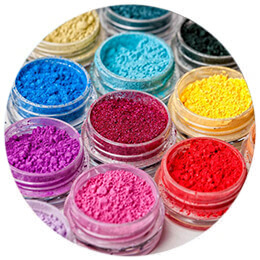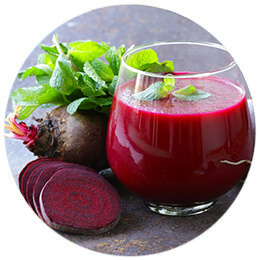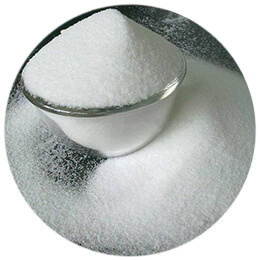Colorants

Synthetic Food Colors
They are colorants that are not found naturally and obtained by chemical synthesis. Today, it is more common to use synthetic dyes as colorants. This is because; Natural food dyes have lower coloring properties compared to synthetic dyes. It is produced as powder or liquid.
Food coloring are substances used to color food, cosmetics or medicines. In addition to giving color to the food that is colorless with the origin, they also perform functions such as making the existing color more vivid and preventing color losses that may occur due to adverse environmental conditions during storage.
From food dyes; It is possible to color industrial foods with powder forms suitable for different usage conditions that are dissolved in water according to production conditions. Beverages, candies, delights and many other industrial foods; You can make colorful with yellow food dyes, orange food dyes, red food dyes, green food dyes, brown food dyes, black food dyes, blue food dyes. In addition, synthetic food dyes are used in the pharmaceutical and cosmetic industries.
- Tartrazine Product Code: E102
- Sunset Yellow Product Code: E110
- Carmoisine (Azorubine) Product Code: E122
- Ponceau 4R AC Product Code: E124
- Amaranth Product Code: E123
- Erythrosine Product Code: E127
- Brilliant Blue FCF Product Code: E133
- Indigo carmine Product Code: E132
- Green S Product Code: E142
- Quinoline Yellow Product Code: E104
- Allura Red product code : E129
- Chocolate Brown HT Product Code: E155
- Patent Blue V Product Code: E131
- Black PN Product Code: E151
- Red 2G Product code : E128
- Food Black 2 Product Code:
- Caramel (liquid / powder) Product Code: E150

Natural Food Colors (Liquid or Powder)
Natural Food Dyes are natural color substances obtained from plant sap, animal and mineral sources. It is obtained from products such as chlorophyll, saffron and red pepper that color the paint. They are synthesized by natural dyestuffs, plant and animal organisms or microorganisms. Some natural ingredients are present in the natural structure of minerals. Natural Food Dyes are less preferred than synthetic dyes. This is because they are more sensitive to light, heat and pH, are sensitive to oxidation, more difficult to dissolve, have less coloring power, production costs and hence the price is sometimes higher. A negative effect of natural food colorants on human health has not been determined. Herbal color materials used directly are red pepper, saffron, beetroot, turmeric, vegetable and fruit juices, etc. Available in powder or liquid forms.
- Beta Carotene Product Code: E160 A
- Turmerıc Product Code: E100
- Lutein Product Code: E161 B
- Annatto Product Code: E160 B
- Paprika Product Code: E160 C
- Red Beet (Beetroot) Product Code: E162
- Carmine Product Code: E120
- C. Chlorophyllin Product Code: E141
- Black Carrot Product Code: E163
- Carbon Black Product Code: E153

Titanium Dioxide PRODUCT CODE: E-171
Titanium Dioxide, the oxide form of naturally occurring titanium, is not found pure in nature and is produced from iron Titanium Dioxide (Fe3TiO3) ores. Titanium Dioxide available in white powder form; It may contain pure Titanium Dioxide, which can be coated with small amounts of aluminum and / or silica to improve the technological properties of the product. Titanium Dioxide, the most widely used white pigment, is very white and has a very high refractive index. Due to its high refractive index and bright whiteness, it is an effective opacifier for pigments. Another important advantage of titanium dioxide is; It does not fade under UV light. Color substances such as titanium dioxide dye foods by dispersing tiny insoluble pigment particles into the environment. Since these particles tend to clump, if they are not dispersed well, some weakness in color intensity will be observed. For this, food companies use Titanium Dioxide by dispersing it in oil, propylene glycol, sugar syrup or water.
Usage areas : Areas of use include food, cosmetics and pharmaceutical products, and it also finds widespread application as a pigment providing whiteness and opacity in the paint, plastic, and paper industries. Its opaque properties provide significant benefits, especially in low-fat products such as cheese and salad dressings, in order to mimic the opaque appearance caused by oil. It is an excellent additive for paints due to its dispersion and optical properties. It is used in paints and coatings, plastics, papers, inks to give whiteness and opacity.
